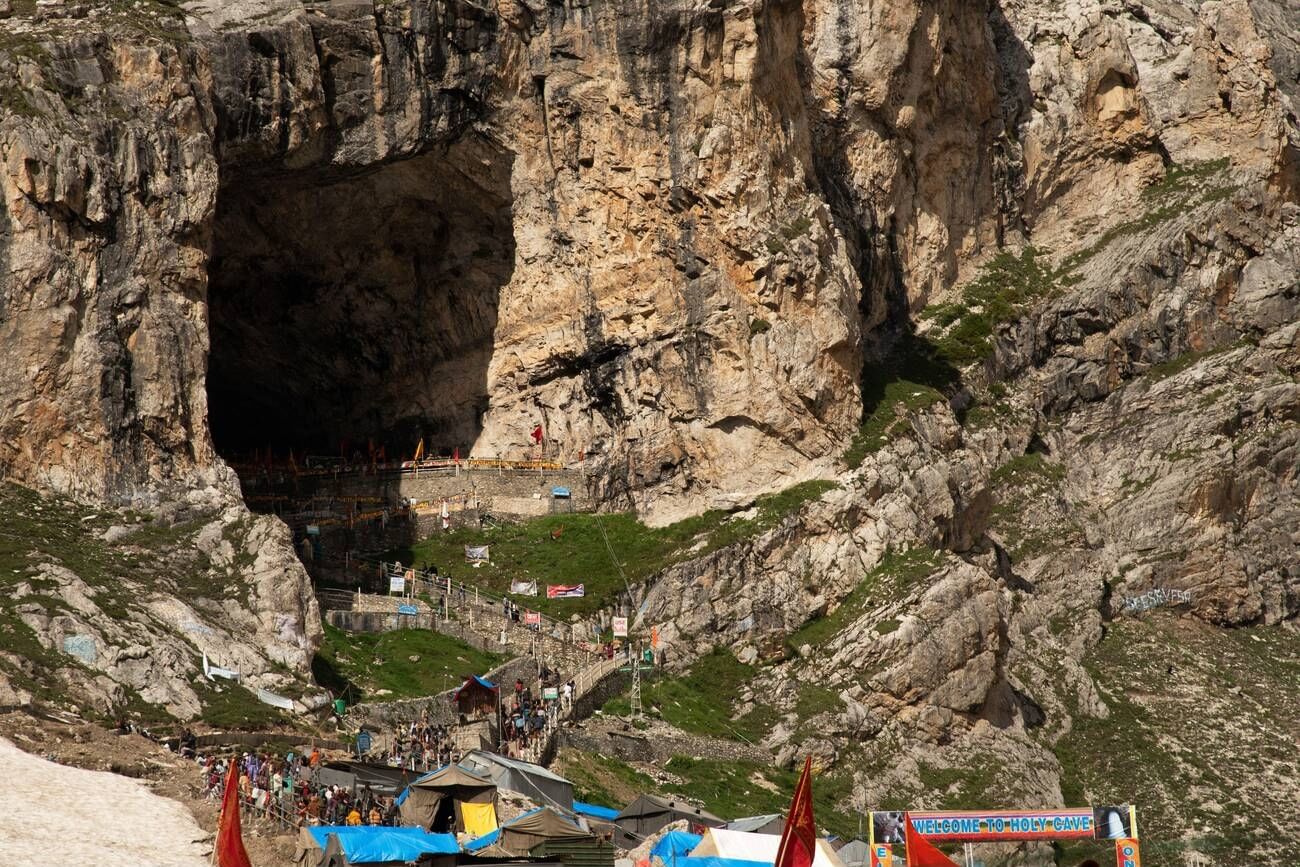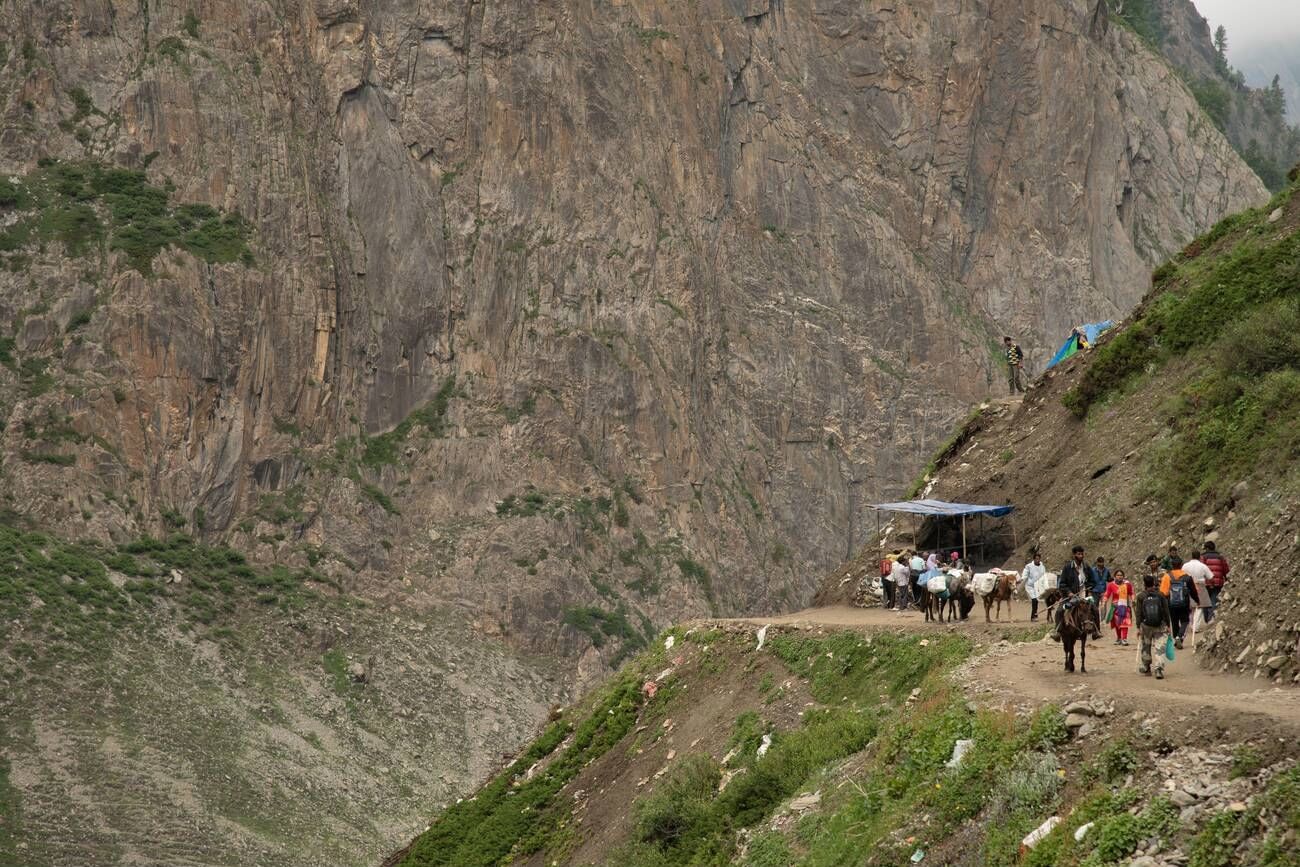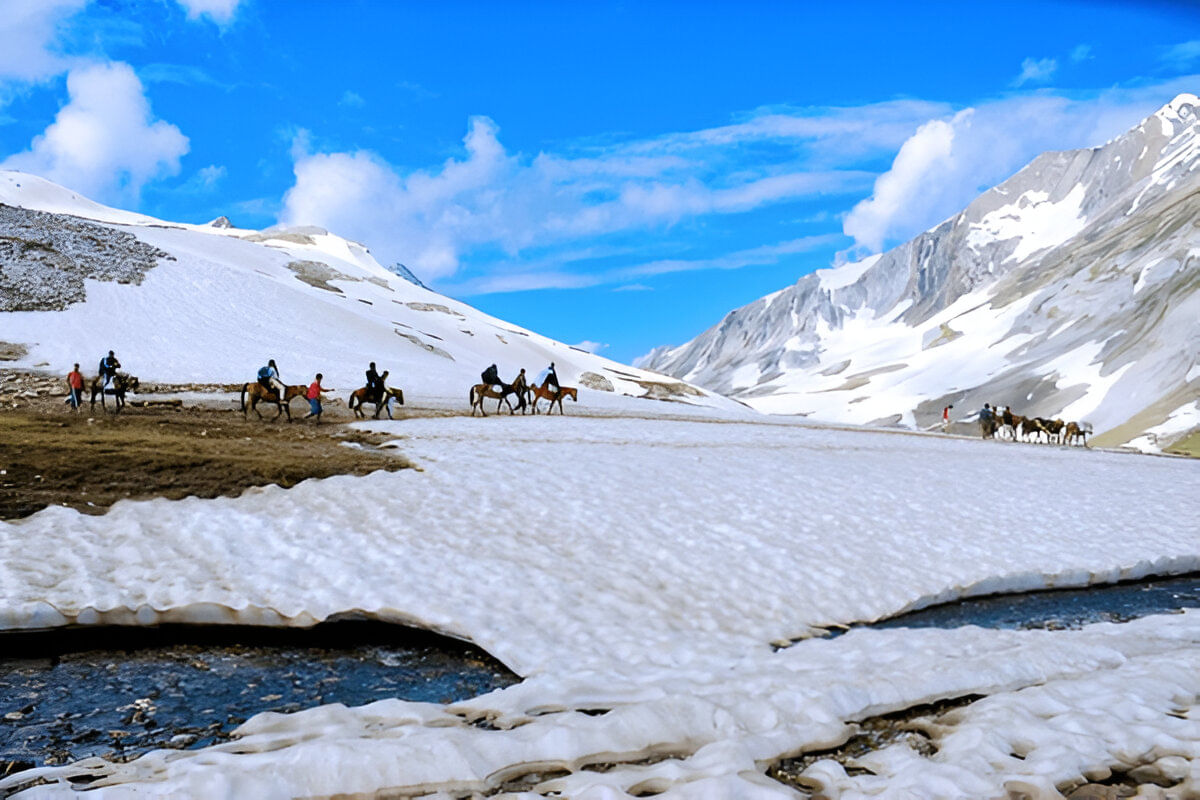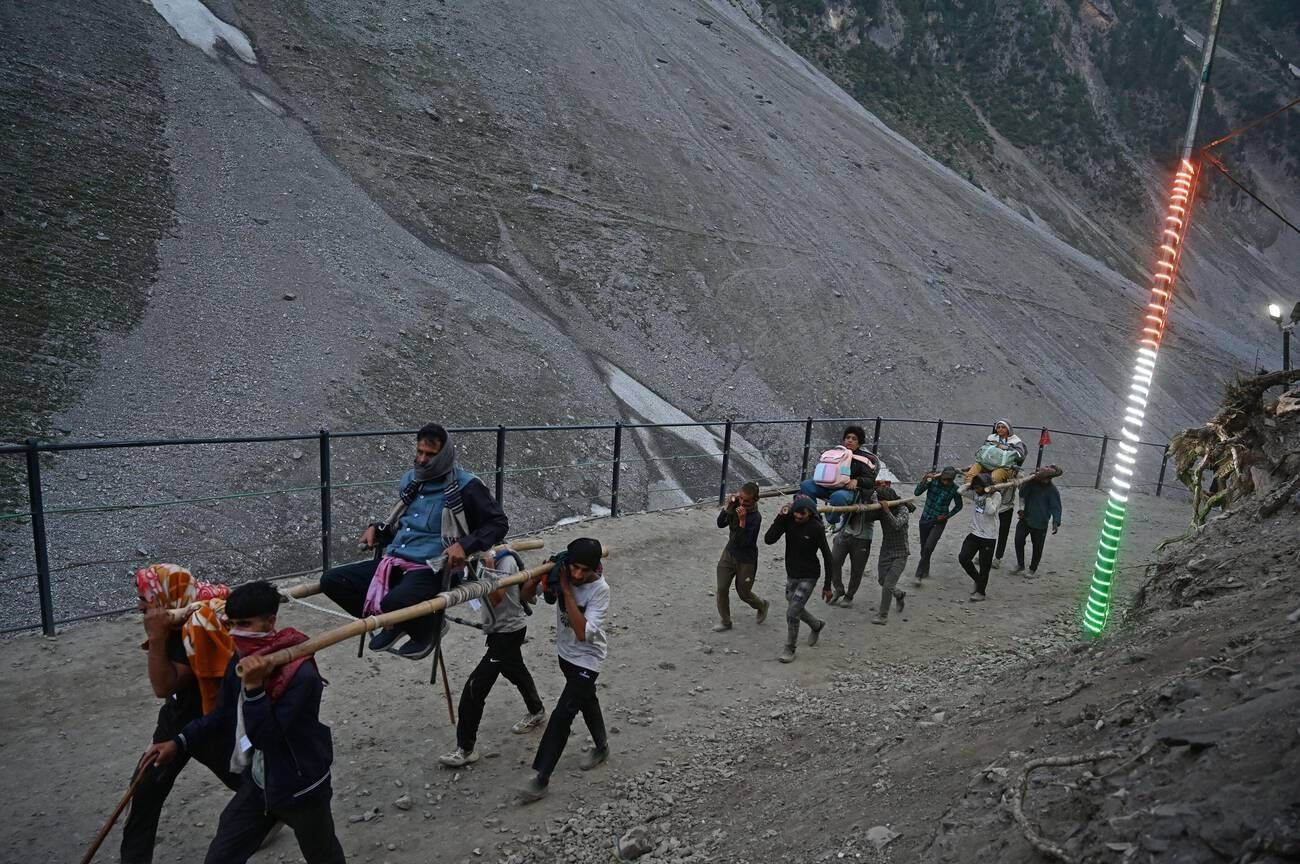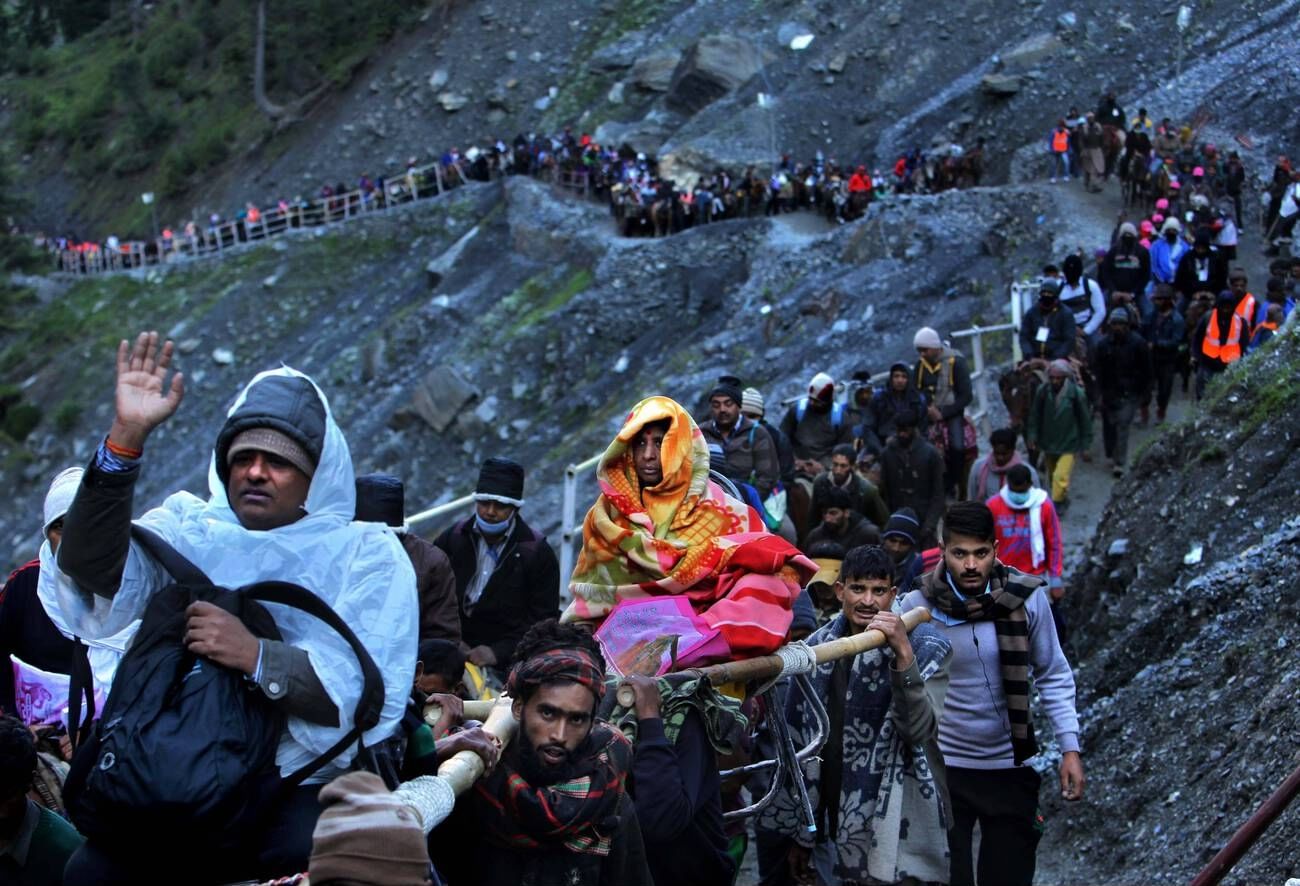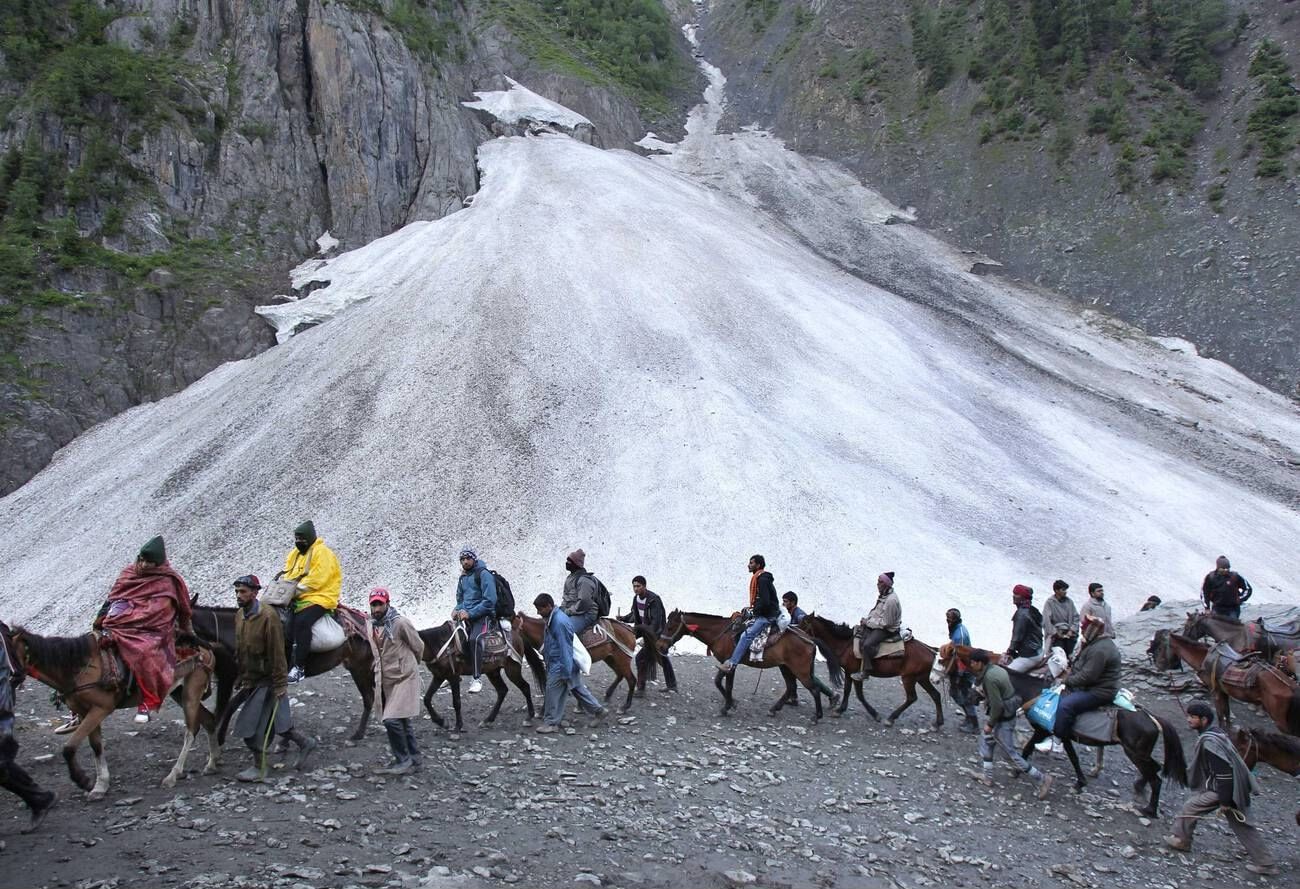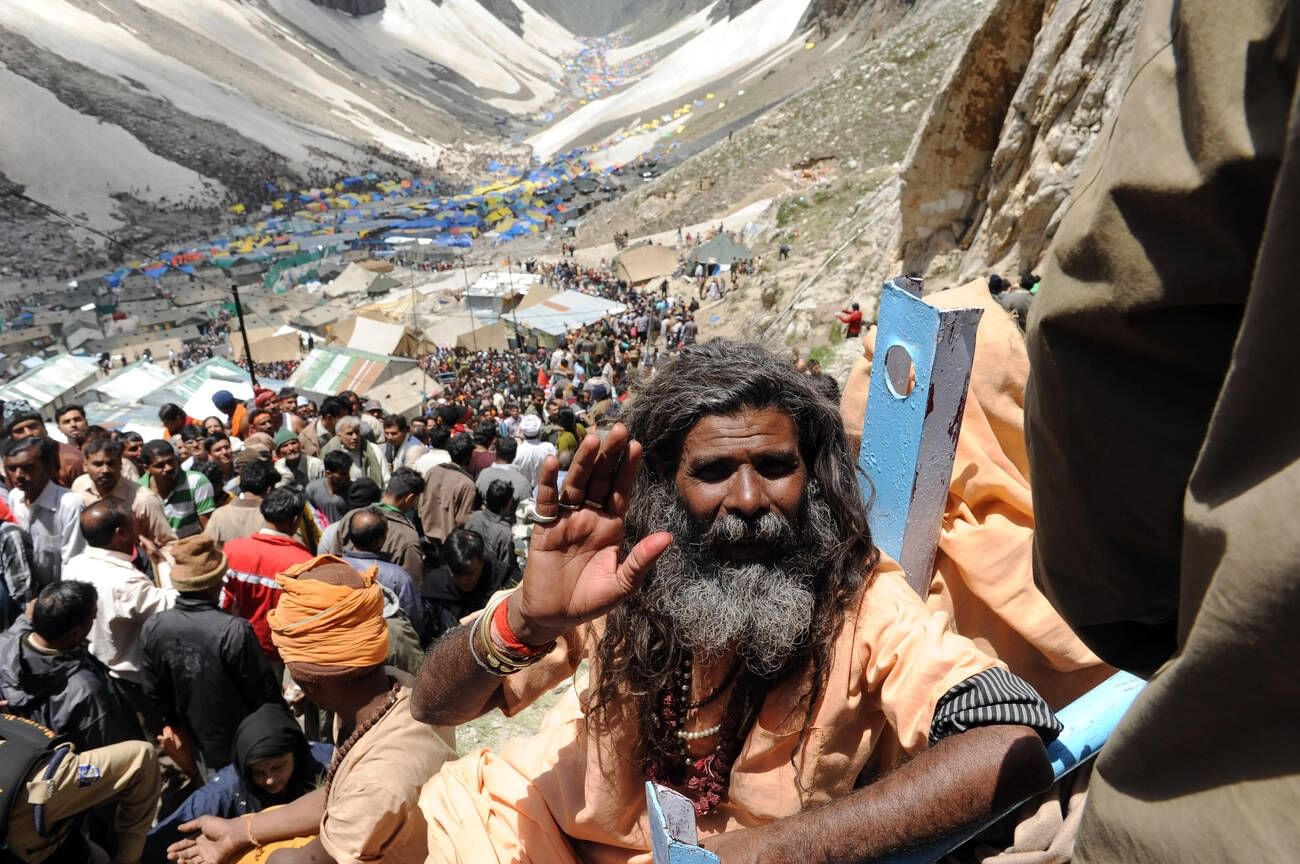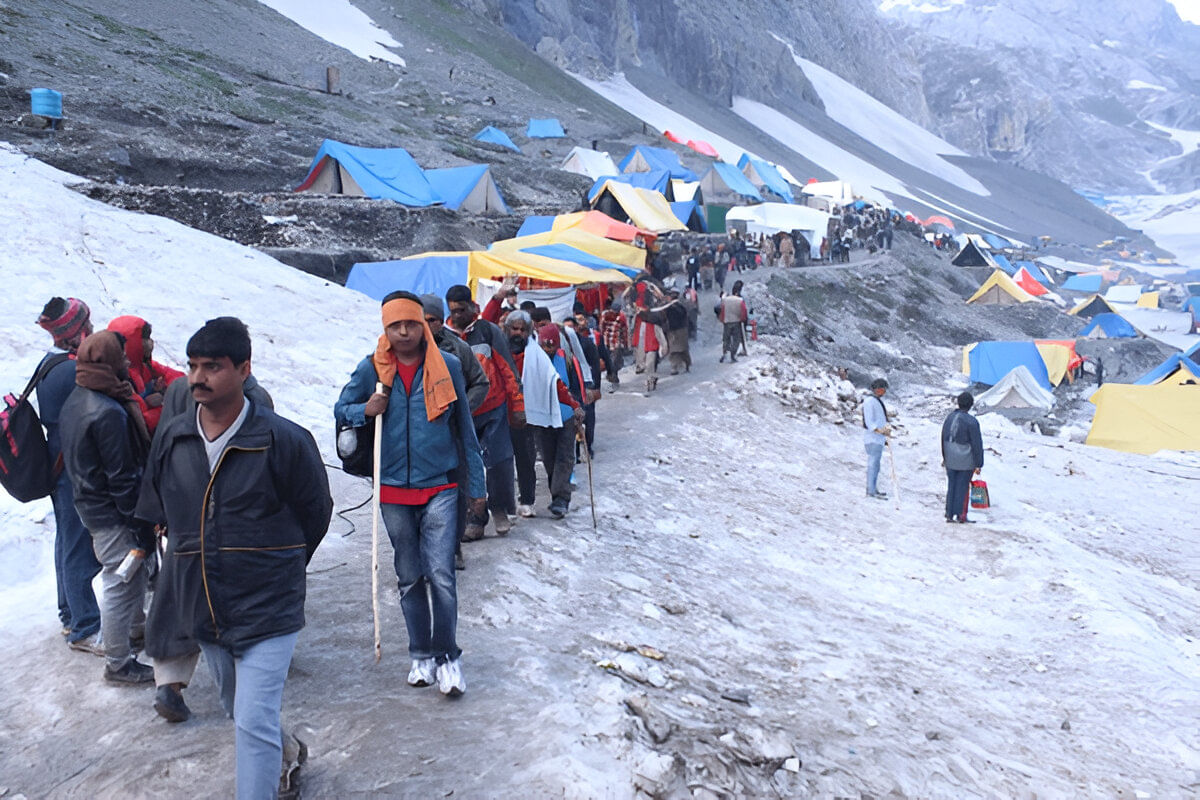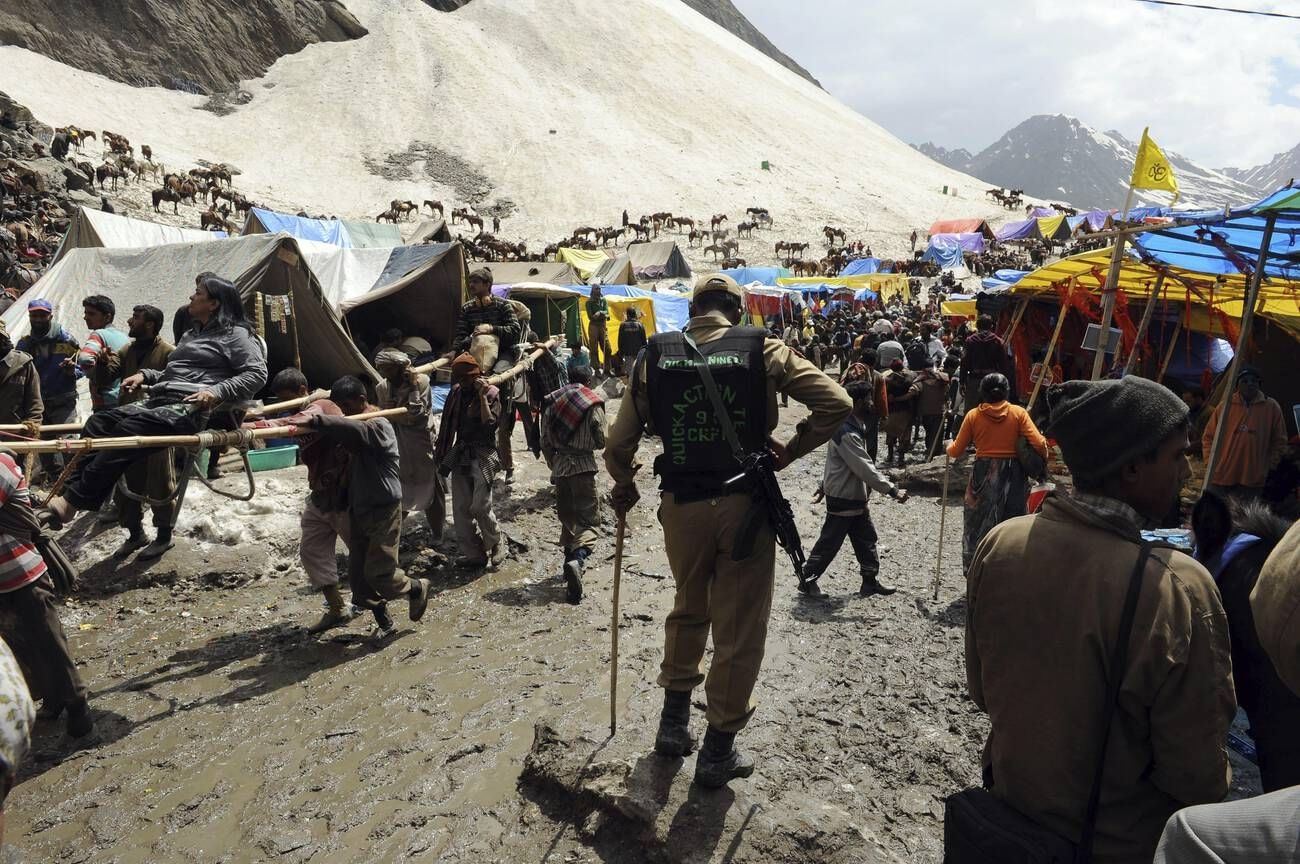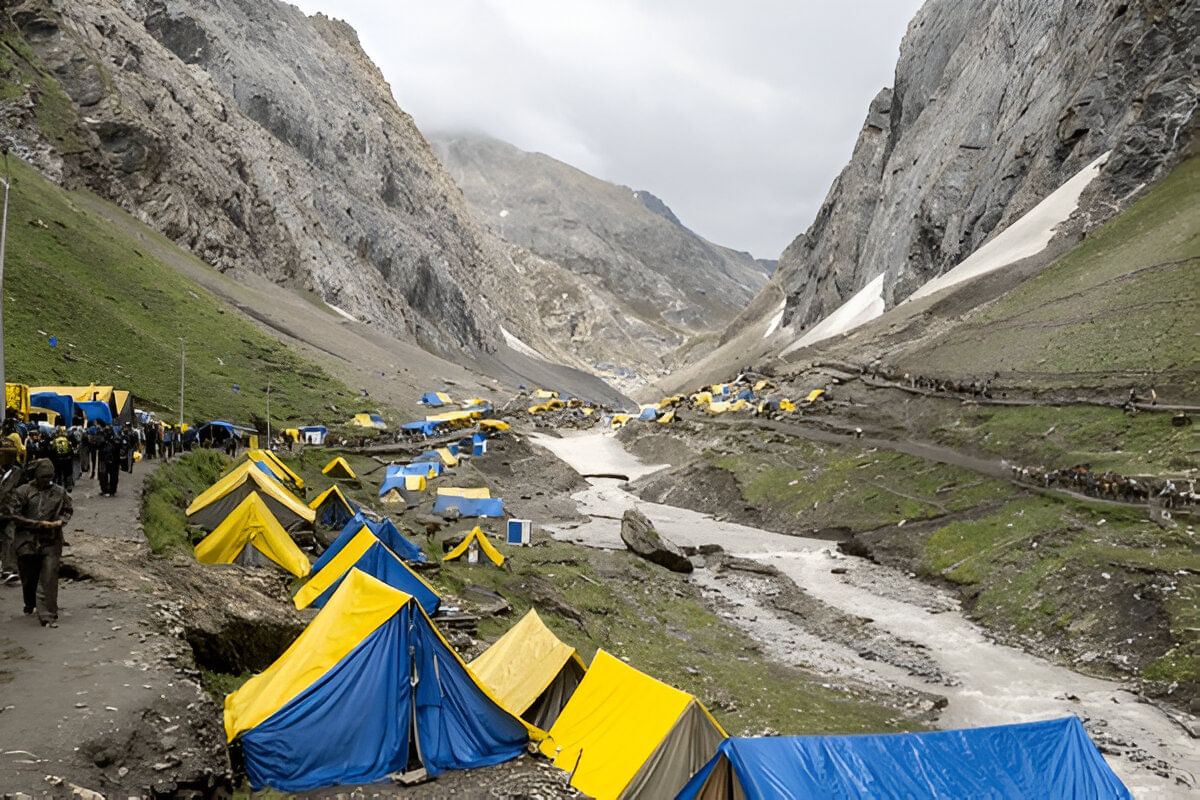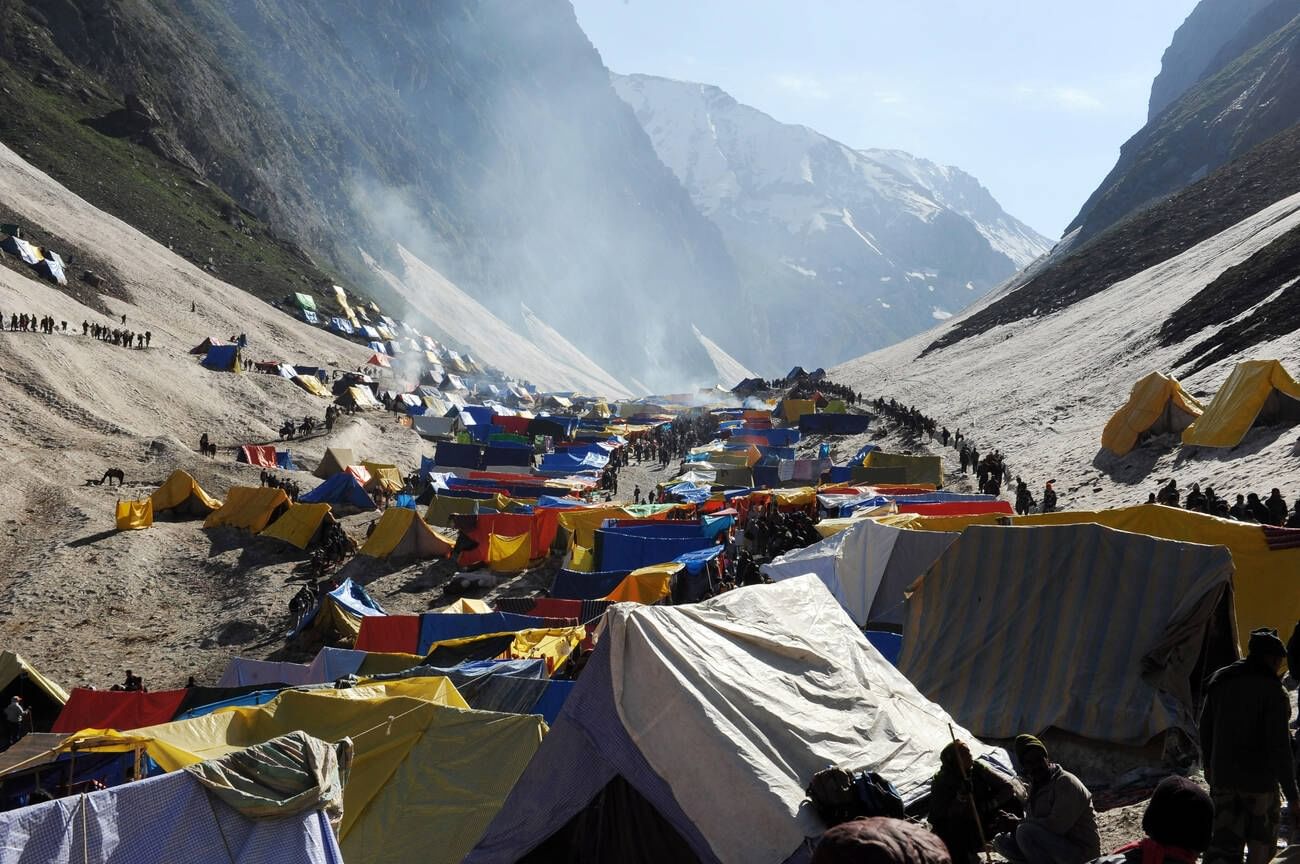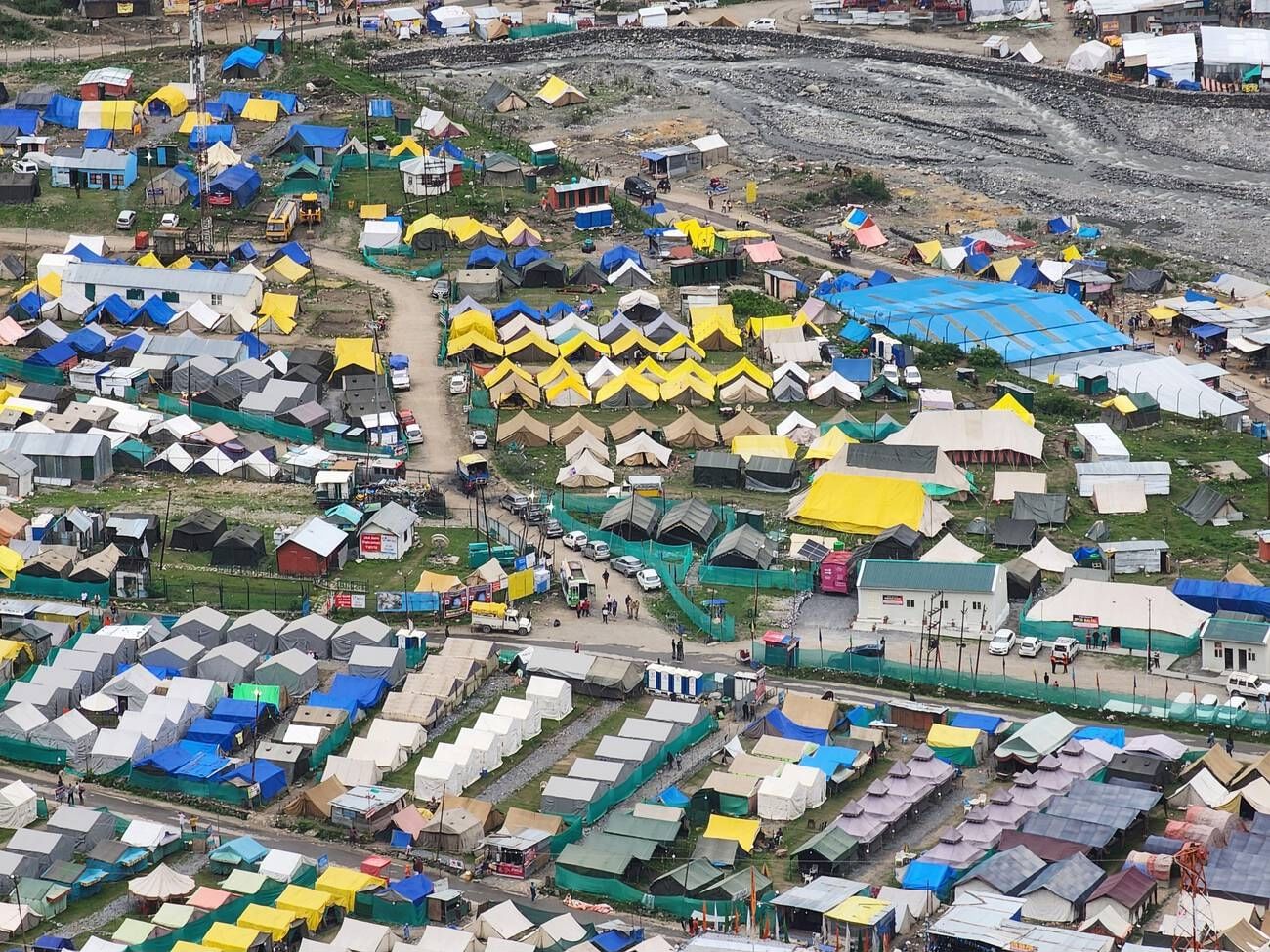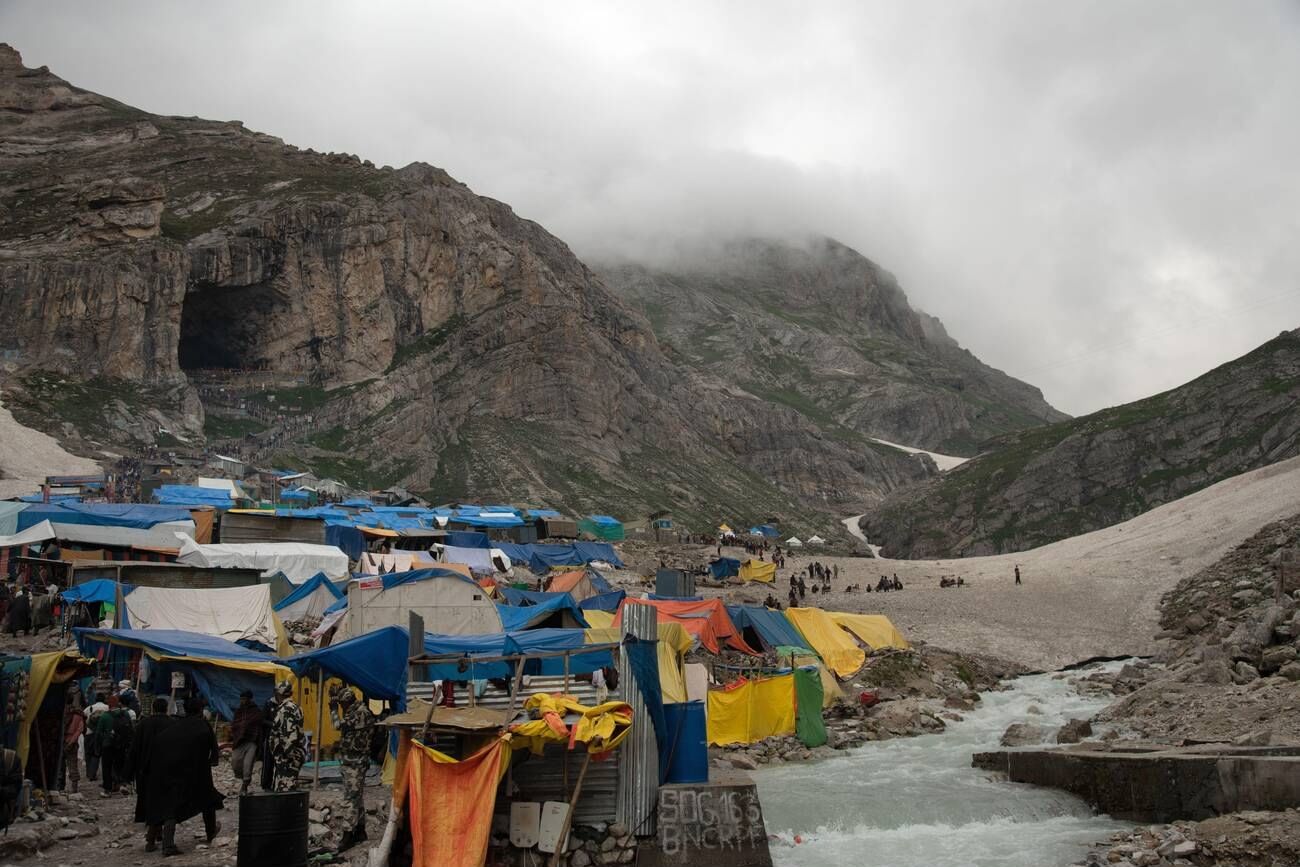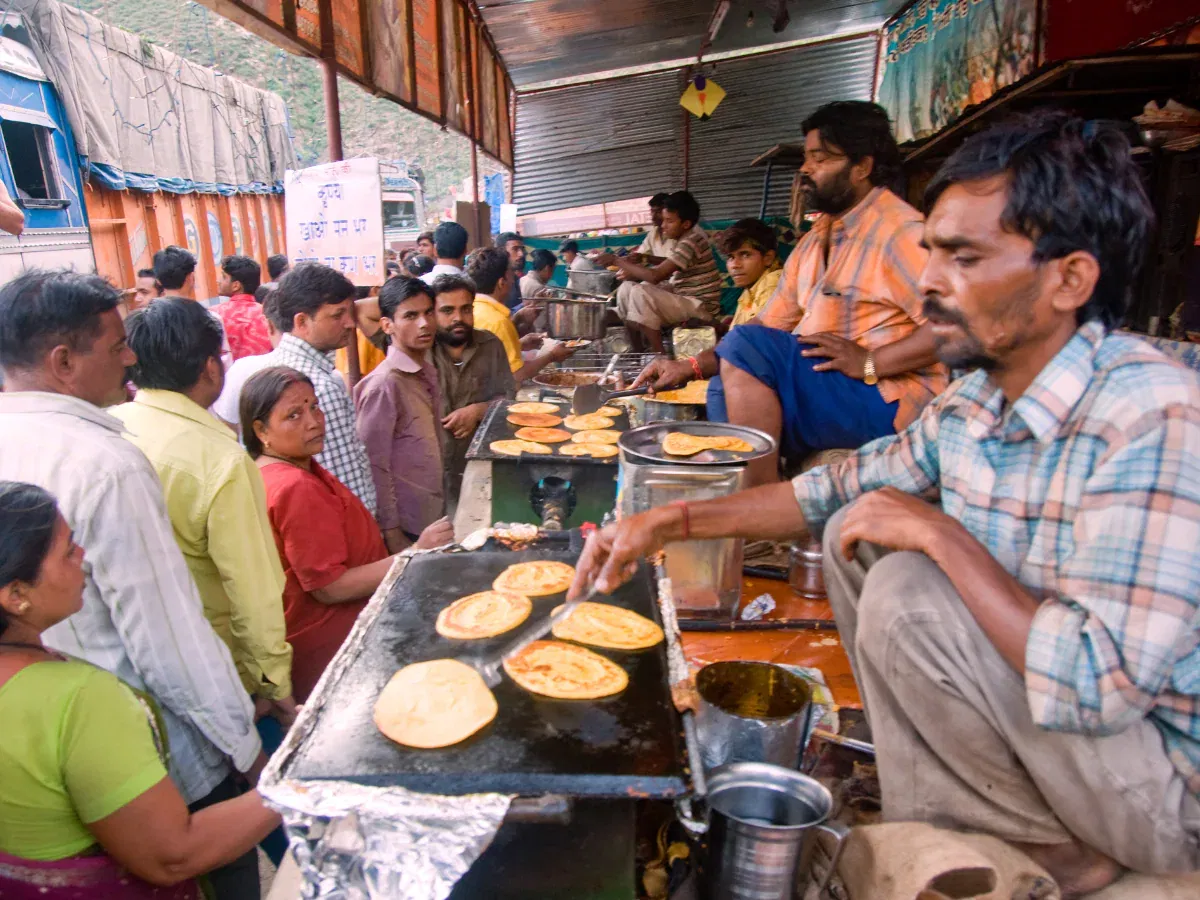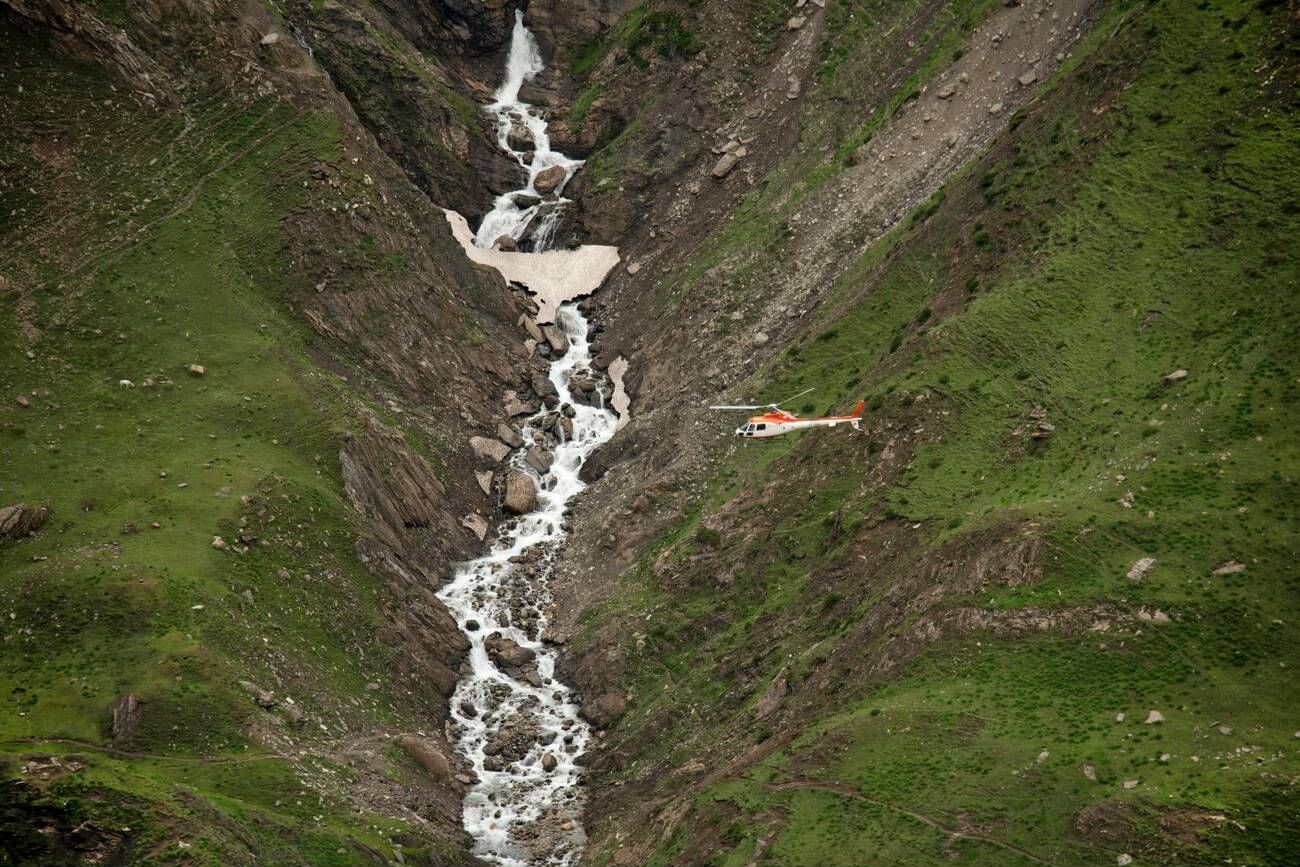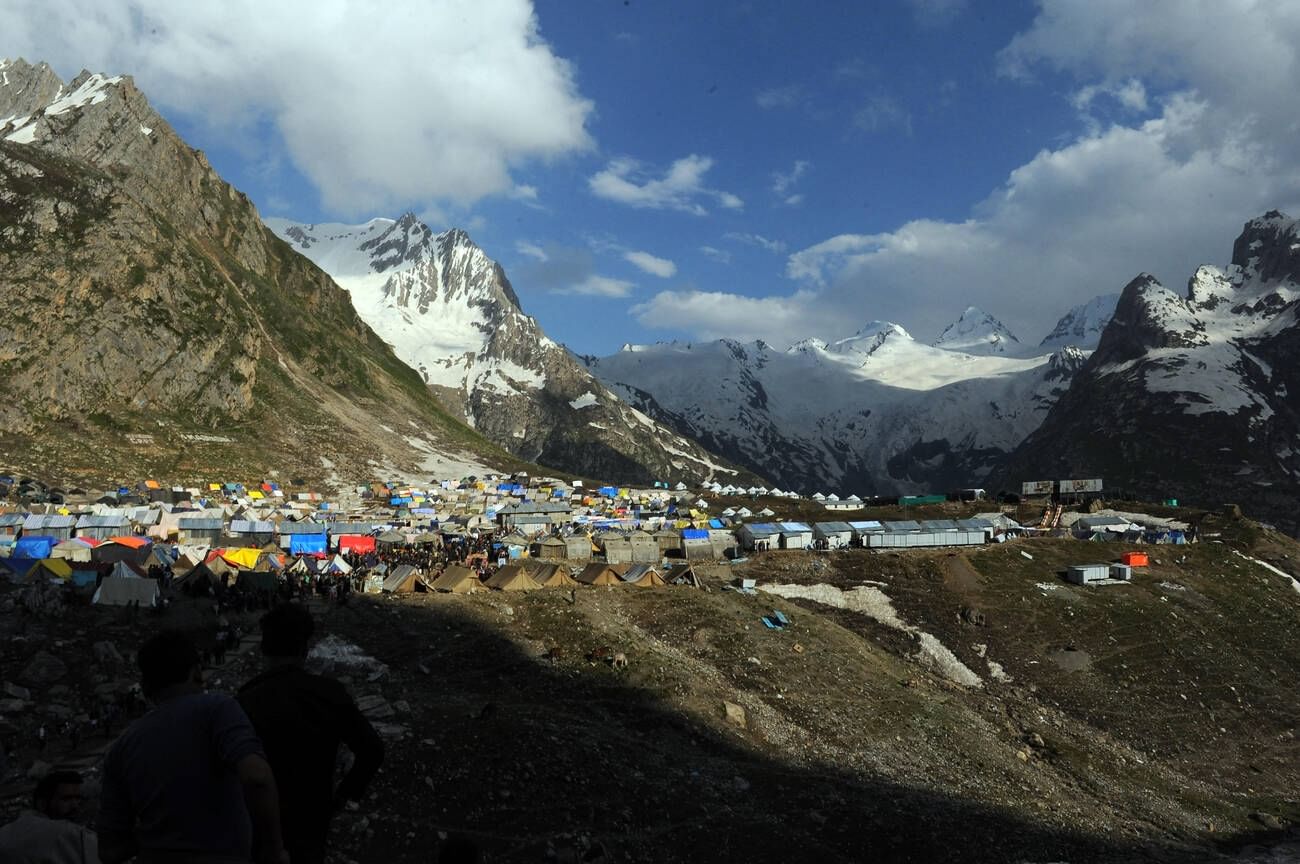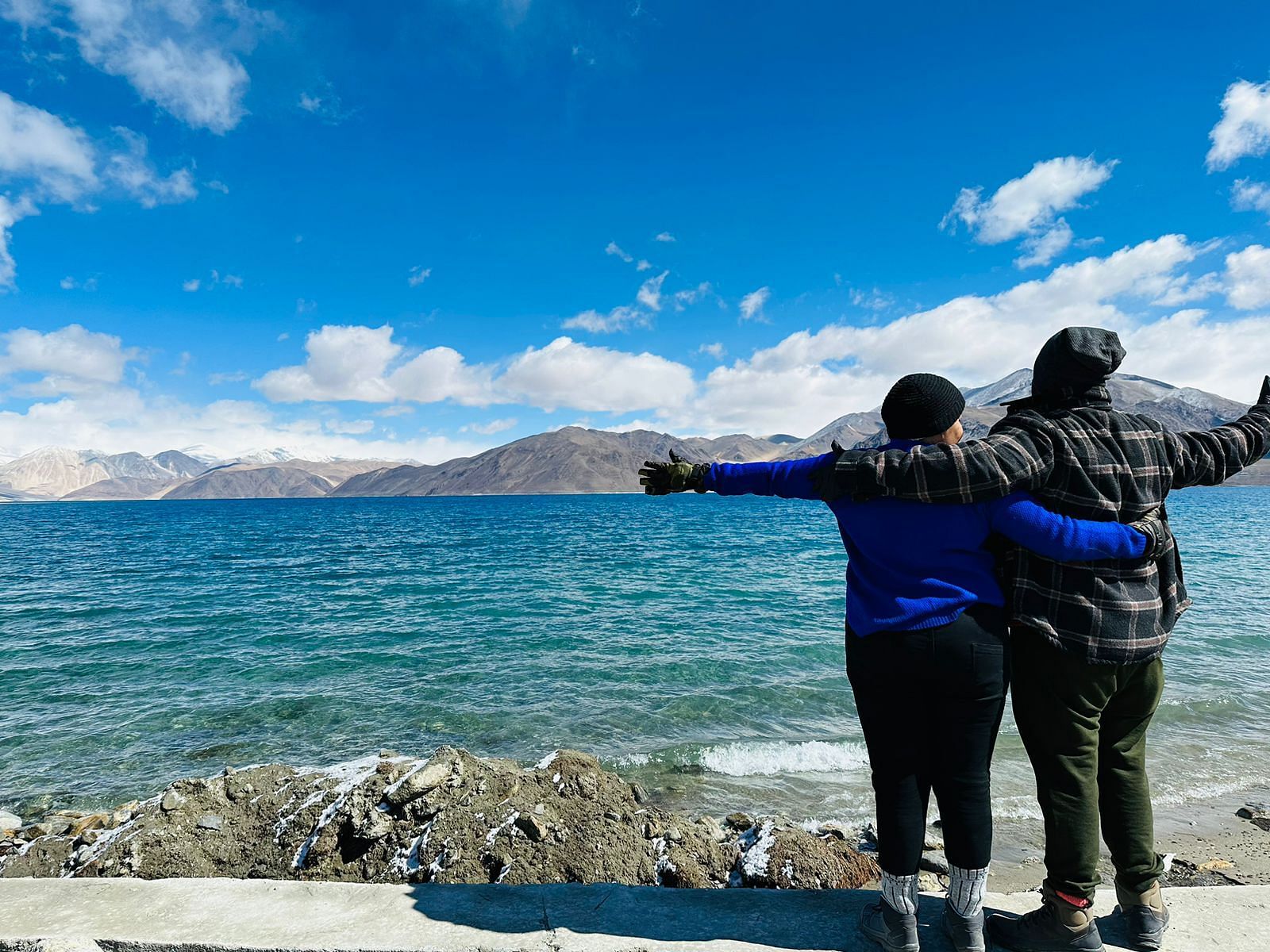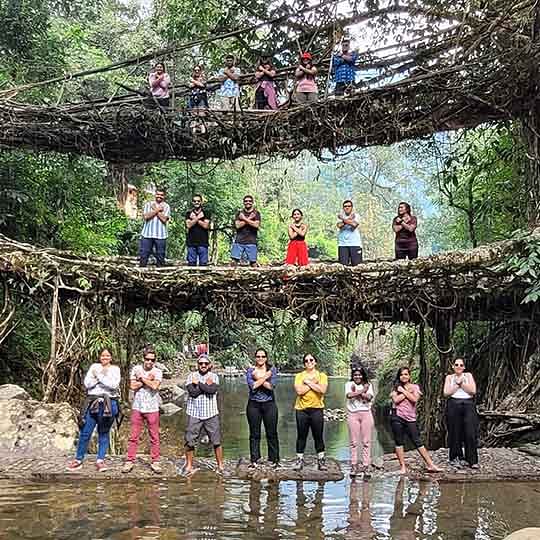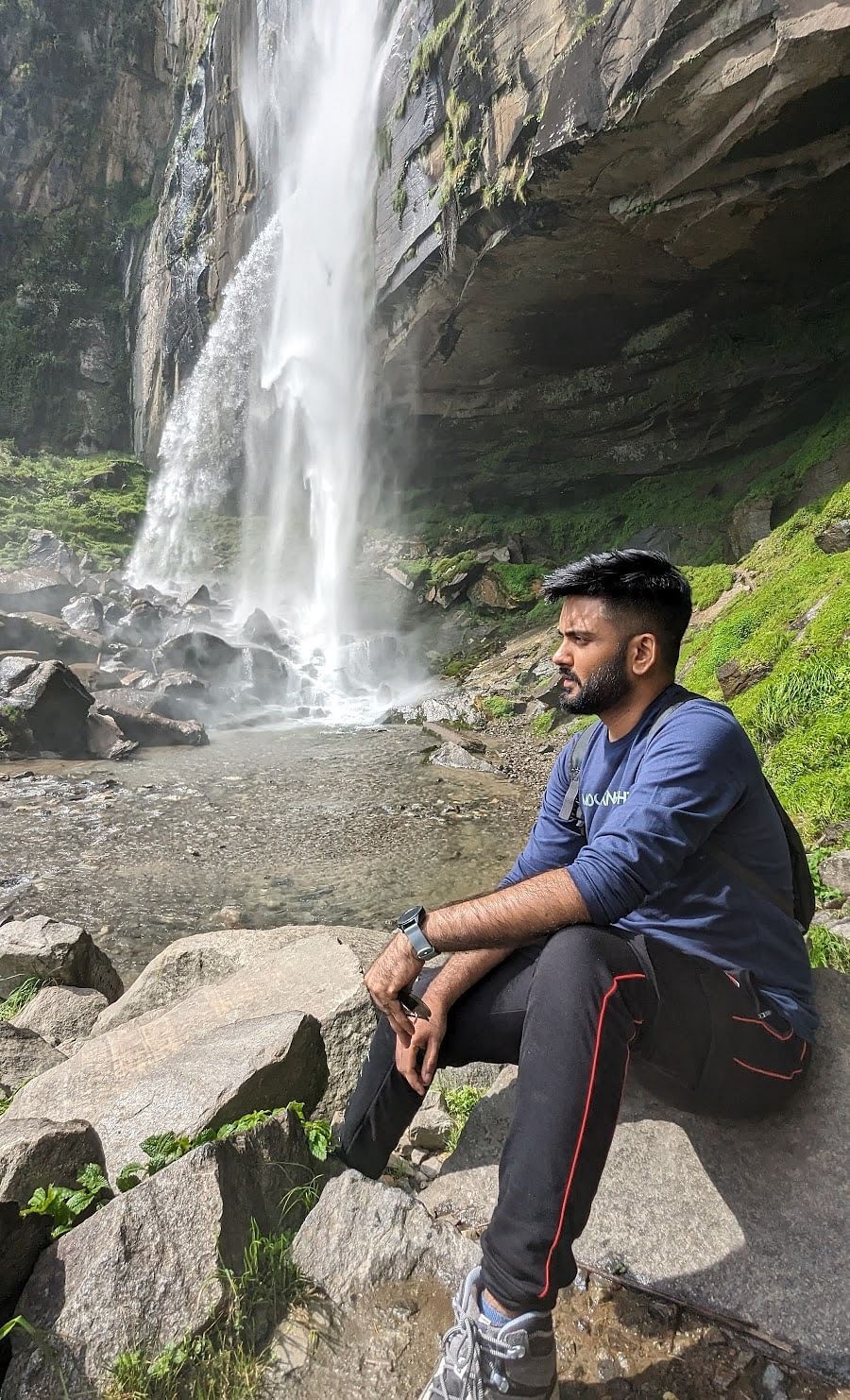You know what is amazing about the Amarnath Cave Temple? It's just perched up there in the Kashmir mountains, nearly 4,000 meters above sea level, and this pilgrimage has been going on for thousands of years.
The entire purpose of people going there is to witness this natural ice formation that is exactly the shape of a Shiva Linga. The amazing thing is how it fluctuates with the moon - people in the town will tell you it has been happening the same way for centuries.
Every year, during the months of June to August, the mountain treks are filled with pilgrims. People from all parts of India trek together, have food together, and assist one another. It takes 3-4 days to cover the trek, and genuinely, the scenery of the mountains is simply breathtaking.
My friend who visited last year reported that the entire experience was life-altering. Not only reaching the cave, but all of it - people you encounter, landscapes you travel, even sleeping under those mountain stars.
The people up there are extremely friendly as well. They've been welcoming pilgrims for generations and really know how to treat guests.
If you are considering undertaking this trek, our Kashmir Tour Packages will help you with all the ins and outs involved in arranging these mountain pilgrimages.
Amarnath Temple Location & Height
The Amarnath temple location is deep in the Lidder Valley, around 29 kilometres from Pahalgam. To get there, you have to climb to a staggering amarnath temple height of about 3,888 meters above sea level. That’s high enough for the air to feel lighter, and you’ll notice yourself slowing down just to catch your breath.
It’s not a place you can visit year-round. Snow keeps it closed for most of the year. Only in summer, usually between late June and August, does the Shri Amarnath cave temple open for the annual pilgrimage.
History and Mythological Significance
The history of the Shri Amarnath cave temple is deeply rooted in Hindu mythology. According to legend, Lord Shiva chose this remote cave to reveal the secret of immortality - the Amar Katha - to Goddess Parvati.
The story says that Shiva left behind all distractions before narrating the secret. He abandoned Nandi (his bull) at Pahalgam, released the moon from his hair at Chandanwari, left his snake at Sheshnag, and even let go of his five elements at Panchtarni before finally entering the cave.
Inside the cave, a naturally formed ice lingam is believed to represent Lord Shiva himself. This lingam changes size according to the phases of the moon, adding to the mystery and sanctity of the Amarnath Temple.
Historical references suggest that the cave was known to locals for centuries, but it became widely recognised as a Hindu pilgrimage site during the reign of King Zain-ul-Abidin in the 15th century. The Amarnath temple yatra grew in importance during the Dogra period in the 19th century.
The Amarnath Temple Yatra – An Annual Spiritual Journey
The Amarnath temple yatra is one of the most awaited religious events in India. Organised by the Shri Amarnathji Shrine Board (SASB), it attracts devotees from across the country and abroad.
This yatra is not just a trek - it’s a journey through breathtaking Himalayan landscapes, with every step bringing pilgrims closer to the sacred cave.
Main Routes for the Yatra:
1. Pahalgam Route (Traditional Route)
- Distance: About 45–48 km from Pahalgam to the cave
- Stops: Chandanwari - Pissu Top - Sheshnag - Mahagunas Pass - Panchtarni - Amarnath Cave
- This route is scenic, passing through meadows, streams, and mountain passes. It is longer but has a gradual climb, making it more manageable for most pilgrims.
- This route is also associated with the mythological journey of Lord Shiva.
2. Baltal Route (Shorter but Steeper)
- Distance: About 14 km from Baltal to the cave
- This path is much steeper and can be completed in a single day, but it is physically demanding.
- Many who choose this route return the same day or stay overnight in tents at Baltal.
- It is popular among younger pilgrims and those with less time.
Amarnath Yatra by Road and Air
Most pilgrims begin their Amarnath yatra by road from Jammu. You can drive or take a bus to either Pahalgam or Baltal, where the trekking begins. For those unable to walk the entire distance, ponies, palanquins, and even helicopter services are available. Helicopters fly from Pahalgam or Baltal to Panchtarni, leaving you with just 6 kilometres to walk.
Amarnath Yatra Registration & Permits
No pilgrim is allowed to start the Amarnath Cave Temple trek without completing the Amarnath Yatra registration process. This ensures safety, health compliance, and crowd management.
Pilgrims can register online through the official Shri AmarnathJi Shrine Board (SASB) website. You’ll need:
- A Compulsory Health Certificate (CHC) from an approved doctor
- A valid ID proof (like Aadhaar or passport)
- Passport-sized photo
- Choose your route (Pahalgam or Baltal)
- Submit the form, pay a fee (around ₹150–₹220), and download your permit and RFID card. Online registration often opens in mid-April.
You may also register at designated bank branches (PNB, SBI, J&K Bank, YES Bank) across India. Bring your CHC, photo ID, and photos. Banks handle the biometric e-KYC and issue your permit for a fee of around ₹150.
Mobile App & Group Registration
SASB also offers a mobile app for registration, and group registration is possible-ideal if travelling with a group of pilgrims.
No matter the method, the Amarnath yatra registration is mandatory. You cannot visit the Amarnath Temple or go to Baltal or Pahalgam without it.
Note: Without a registration slip, pilgrims are not allowed to proceed beyond the base camps.
The Shri Amarnath cave temple opens only for a short window in summer, usually from late June to early August. The exact dates change each year, based on the Hindu calendar and weather conditions.
The best time to visit Amarnath Temple is during the early days of the yatra when crowds are smaller and the weather is relatively stable. However, nights can still be very cold due to the high Amarnath temple height.
Facilities and Safety Measures
The pilgrimage to the Amarnath Cave Temple is challenging, but SASB provides several facilities:
- Rest camps: Available at Chandanwari, Sheshnag, Panchtarni, and Baltal
- Medical aid: First-aid and emergency medical services at major stops
- Langars: Free food provided by volunteers and religious organisations along the route
Security: The yatra is heavily guarded by security forces to ensure safety
Safety Tips for Pilgrims:
- cclimatise yourself for a day or two before starting the trek
- Carry warm clothing, rain gear, and sturdy footwear
- Avoid alcohol and smoking during the journey
- Stay hydrated but avoid overexertion
- Follow instructions from authorities at all times
Staying during the Amarnath Temple Yatra is a unique experience-humble yet surprisingly comfortable, depending on where you stop.
1. SASB Huts (Government-Run)
The Shri Amarnathji Shrine Board (SASB) arranges government-run huts at key points along the route-most notably at Baltal and Chandanwari. These are more solid than tents and often come with simple facilities like beds, mattresses, blankets, and in some cases, shared or attached bathrooms. Booking is competitive: the registration window opens around April–May and follows a first-come, first-served system. You’ll pay a deposit upfront, then clear the rest on arrival. Note that huts at Baltal and Chandanwari tend to be pricier, while spots at Pahalgam and Sonamarg are comparatively cheaper.
Rules are strict: maximum six people per hut, no kids under five, and everyone must be out by 10:00 AM on departure day. Remember to pack your own towels and toiletries-those aren’t provided.
2. Tents & Dharamshalas on the Route
If SASB huts are booked or not available, don’t worry-tented camps and dharamshalas (charity lodgings) are available at places like Chandanwari, Sheshnag, and Panchtarni. Prices generally range between INR 500–3,000 per night, depending on the comfort level.
These are basic-think a simple mattress, possibly with a thin blanket-but they serve their purpose well when you’re on a mission to reach the cave. In places like Panchtarni, stray tents or huts near the final stretch might pop up, especially to meet peak demand.
Baltal, which serves as the shorter base camp for pilgrims, is essentially a massive campground perched at around 2,730 meters. It’s famous for its scenic meadows and rugged beauty. Accommodation here is almost entirely tent-based and very budget-friendly. Accommodation is limited, so arriving early or arranging ahead through tour operators is wise.
4. Tour Operator & Package Options
Tour agencies often offer packages that bundle accommodation, meals, and transport. Depending on the package, you can stay in tents, at SASB huts, or even upgraded “standard” or “deluxe” hotels in nearby base towns like Sheshnag, Panchtarni, or Baltal. These packages bring more comfort-room service, better sanitation, sometimes even hot meals-but they cost more and still require early planning.
5. Guesthouses, Hotels & Langars
If you begin your yatra from Pahalgam, you’ll find more established hotels or guesthouses there, especially at the beginning or end of your trip. These can range from basic dorms (Yatri Niwas) to modest cottages and even 1–2 BHK hut-style lodgings.
Environmental Responsibility
The Himalayas around the Amarnath Cave Temple are ecologically sensitive. Pilgrims are urged to:
- Carry reusable water bottles
- Avoid littering
- Use biodegradable items where possible
- Respect local customs and wildlife
Keeping the route clean ensures that future generations can also experience the beauty and sanctity of this sacred pilgrimage.
The Amarnath Cave Temple is not just a destination — it is a life-changing journey. The combination of divine belief, physical endurance, and the beauty of the Himalayas makes it one of the most memorable pilgrimages in the world.
From the Amarnath temple height that challenges the body, to the deep legends that enrich the soul, every part of the journey is meaningful. Whether you travel via the longer Pahalgam route or the shorter Baltal path, by foot or by helicopter, the goal remains the same — to stand in the sacred cave and feel the presence of Lord Shiva.
For those ready to undertake the journey, remember: start with faith, prepare well, and respect the mountains. The Amarnath Cave Temple will reward you with an experience that stays in your heart forever.





